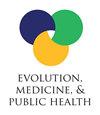Take it to the limit: the limitations of energetic explanations for birth timing in humans
IF 2.1
3区 医学
Q2 EVOLUTIONARY BIOLOGY
引用次数: 0
Abstract
Abstract A hallmark of modern humans is that our newborns are neurologically immature compared to other primates. It is disputed whether this so-called secondary altriciality evolved due to remodelling of the pelvis associated with bipedal locomotion, as suggested by the obstetrical dilemma hypothesis, or from maternal energetic limitations during pregnancy. Specifically, the “Energetics of Gestation and Growth” (EGG) hypothesis posits that birth is initiated when fetal energy requirements exceed the maximum sustained maternal metabolic rate during pregnancy at around 2.1 × basal metabolic rate (BMR) of the non-pregnant, non-lactating condition (NPNL). However, the metabolic threshold argued under the EGG framework is derived from one study with a small sample size of only twelve women from the UK. Accordingly, we performed a meta-analysis of all published studies on metabolic scopes during pregnancy to better account for variability. After excluding three studies with methodological issues, a total of twelve studies with 303 women from five high- and three low-income countries were analysed. On average, pregnancy was found to be less metabolically challenging than previously suggested. The studies revealed substantial variation in metabolic scope during pregnancy, which was not reflected by variation in birth timing. Further, in a third of the studies the metabolic rates exceeded 2.1 × BMRNPNL. Our simulation of fetal energy requirements demonstrated that this metabolic threshold of 2.1 × BMRNPNL cannot realistically be crossed by the fetus around the time of birth. These findings imply that metabolic constraints are not the main limiting factor dictating gestation length.把它发挥到极致:人类出生时间的能量解释的局限性
现代人类的一个特点是,与其他灵长类动物相比,我们的新生儿在神经系统上还不成熟。这种所谓的继发性肥胖是由于与双足运动相关的骨盆重塑(如产科困境假说所提出的),还是由于孕妇在怀孕期间的能量限制而进化而来的,目前尚存争议。具体来说,“妊娠和生长的能量学”(EGG)假说认为,当胎儿的能量需求超过怀孕期间母体的最大持续代谢率时,即在非怀孕、非哺乳状态(NPNL)的基础代谢率(BMR)的2.1倍左右,出生就开始了。然而,EGG框架下的代谢阈值来自一项研究,该研究的样本量很小,只有来自英国的12名女性。因此,我们对所有已发表的关于妊娠期间代谢范围的研究进行了荟萃分析,以更好地解释差异。在排除了3项有方法问题的研究之后,总共分析了来自5个高收入国家和3个低收入国家的303名妇女的12项研究。平均而言,怀孕对新陈代谢的挑战比之前认为的要小。这些研究揭示了怀孕期间代谢范围的实质性变化,而这并没有反映在分娩时间的变化上。此外,在三分之一的研究中,代谢率超过2.1 × BMRNPNL。我们对胎儿能量需求的模拟表明,胎儿在出生时实际上无法超过2.1 × BMRNPNL的代谢阈值。这些发现表明,代谢限制并不是决定妊娠期长度的主要限制因素。
本文章由计算机程序翻译,如有差异,请以英文原文为准。
求助全文
约1分钟内获得全文
求助全文
来源期刊

Evolution, Medicine, and Public Health
Environmental Science-Health, Toxicology and Mutagenesis
CiteScore
5.40
自引率
2.70%
发文量
37
审稿时长
8 weeks
期刊介绍:
About the Journal
Founded by Stephen Stearns in 2013, Evolution, Medicine, and Public Health is an open access journal that publishes original, rigorous applications of evolutionary science to issues in medicine and public health. It aims to connect evolutionary biology with the health sciences to produce insights that may reduce suffering and save lives. Because evolutionary biology is a basic science that reaches across many disciplines, this journal is open to contributions on a broad range of topics.
 求助内容:
求助内容: 应助结果提醒方式:
应助结果提醒方式:


